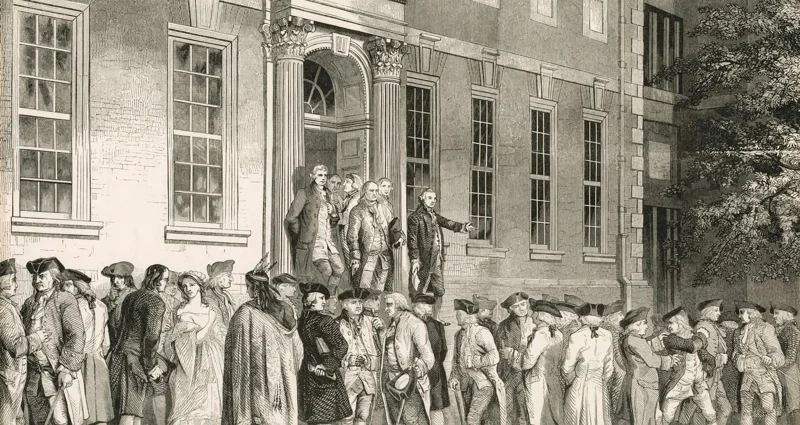The upcoming America 250 celebration in 2026, marking the 250th anniversary of the Declaration of Independence, is expected to have a significant impact on travel across the United States. With early booking trends already showing increased occupancy in key historical and cultural destinations, property managers and destination marketing organizations must prepare strategically to capitalize on this once-in-a-generation event.
America 250 is set to be a monumental celebration in 2026, commemorating the 250th anniversary of the signing of the Declaration of Independence. This nationwide event is anticipated to be one of the largest travel years in U.S. history, with a variety of festivities planned across the country. The celebration will include parades, festivals, and community gatherings, particularly during the July 4th holiday week, which is expected to be the focal point of the events.
Occupancy Trends and Early Bookings
According to Key Data’s vacation rental performance metrics, early booking trends for the July 4th week in 2026 indicate a significant impact from America 250 events. While the overall U.S. occupancy pacing remains steady at 5%, certain historically significant regions are experiencing a surge in early bookings. For instance, South Dakota’s occupancy pacing has increased from 6% in 2025 to 13% in 2026, highlighting a growing interest in reservations near national parks and event hubs. Washington, D.C., a central location for the celebrations, reports an 8% increase, reaching a 9% occupancy rate, which is pacing year-over-year.
Other regions, such as Virginia, are also seeing benefits, with occupancy rates rising by two points to 5%. Despite a slight decline in North Carolina’s occupancy pace from 16% to 12%, the state still shows strong demand following its robust performance in 2025. Pennsylvania’s occupancy pacing has improved from 1% to 2%, indicating early traveler interest in these once-in-a-generation events.

Booking Windows and Market Strategies
In 2026, the national average booking window (ABW) is nearly identical to 2025, sitting at 331 days. This trend indicates that travelers continue to plan their trips almost a year in advance for major holidays. Washington, D.C., stands out with a 19% increase in booking lead time, now averaging 333 days, as guests secure accommodations early for large-scale national events. Meanwhile, other markets, such as South Dakota, Virginia, and West Virginia, show slight declines in booking windows, suggesting steady booking behavior despite increasing demand.
For property managers and destination marketing organizations (DMOs), these metrics emphasize the importance of early engagement. Markets with rising occupancy and extended booking windows should initiate targeted campaigns, focusing on event-driven messaging and flexible rate strategies to secure high-value bookings well ahead of 2026.
Average Daily Rate (ADR) Trends
Despite rising occupancy in several markets, average daily rates (ADR) for July 4th, 2026, show mixed momentum across the country. National ADRs have decreased slightly by 1% year-over-year, averaging $724, suggesting that rate adjustments have not yet aligned with increasing traveler demand. North Carolina’s ADR has declined by 3% to $882, and South Dakota’s by 14% to $696, as managers cautiously avoid rate increases despite higher bookings.
Virginia experienced a more significant 34% drop to $662, potentially due to early-season discounts or cautious pricing amid a soft comparison for 2025. Pennsylvania’s ADR dipped by 16% to $604. West Virginia experienced the sharpest decline in ADR, down 53% year-over-year to $616, suggesting that while the market attracts more bookings, pricing strategies may not yet be optimized for peak demand. Conversely, Washington, D.C. experienced a 137% surge to $448, reflecting the power of event-driven pricing in high-demand, limited-supply markets.
Traveler Behavior and Stay Length Patterns
Traveler behavior data reveals nuanced patterns as 2026 approaches. The national average stay length remains steady at 7.6 nights, unchanged from 2025. However, some states exhibit significant shifts. Washington, D.C. saw a 33% decline in average stay length to 4.7 nights, likely reflecting shorter, event-driven stays centered around specific America 250 activities. Virginia and West Virginia also experienced notable declines in stay lengths.
In contrast, South Dakota and North Carolina maintained or slightly increased their average stay lengths, with guests staying around 4.8 and 8.1 nights, respectively. These regions may see longer stays tied to family travel and national park tourism as part of celebratory road trips. These mixed trends indicate diverse traveler intent, with some seeking immersive historical experiences and others opting for short-event visits.
Strategic Implications for Property Managers and DMOs
1. Focus on Revenue, Not Just Occupancy: While RevPAR growth in several markets is driven by higher occupancy, property managers must focus on maximizing revenue, not merely filling nights. A surge in bookings can mask underperforming rates, so finding the right balance between ADR and occupancy is essential. Data-driven pricing strategies can help capture increased demand without compromising rate integrity.
2. Market Early, Market Smart: With booking windows exceeding 11 months in many markets, there is a valuable opportunity to attract travelers. DMOs should integrate America 250 messaging into destination content and campaigns, while property managers focus on seasonal visibility and loyalty-driven rebooking.
3. Leverage Data to Stay Ahead: Utilizing real-time data from Key Data’s dashboards enables property managers to track pacing trends, spot opportunities, and forecast more accurately as America 250 approaches. Staying informed about occupancy, ADR, and RevPAR in context will help ensure strategies remain agile and profit-focused.
Conclusion
America 250 represents a unique opportunity for tourism growth. For vacation rental managers and DMOs, the July 4, 2026, holiday week offers a chance to capitalize on traveler enthusiasm tied to America’s sesquicentennial. Understanding where occupancy and ADR trends diverge will be crucial. As Key Data’s early insights suggest, success in 2026 will depend on a timely strategy, flexible pricing, and effective destination storytelling.
Discover more at Key Data.


